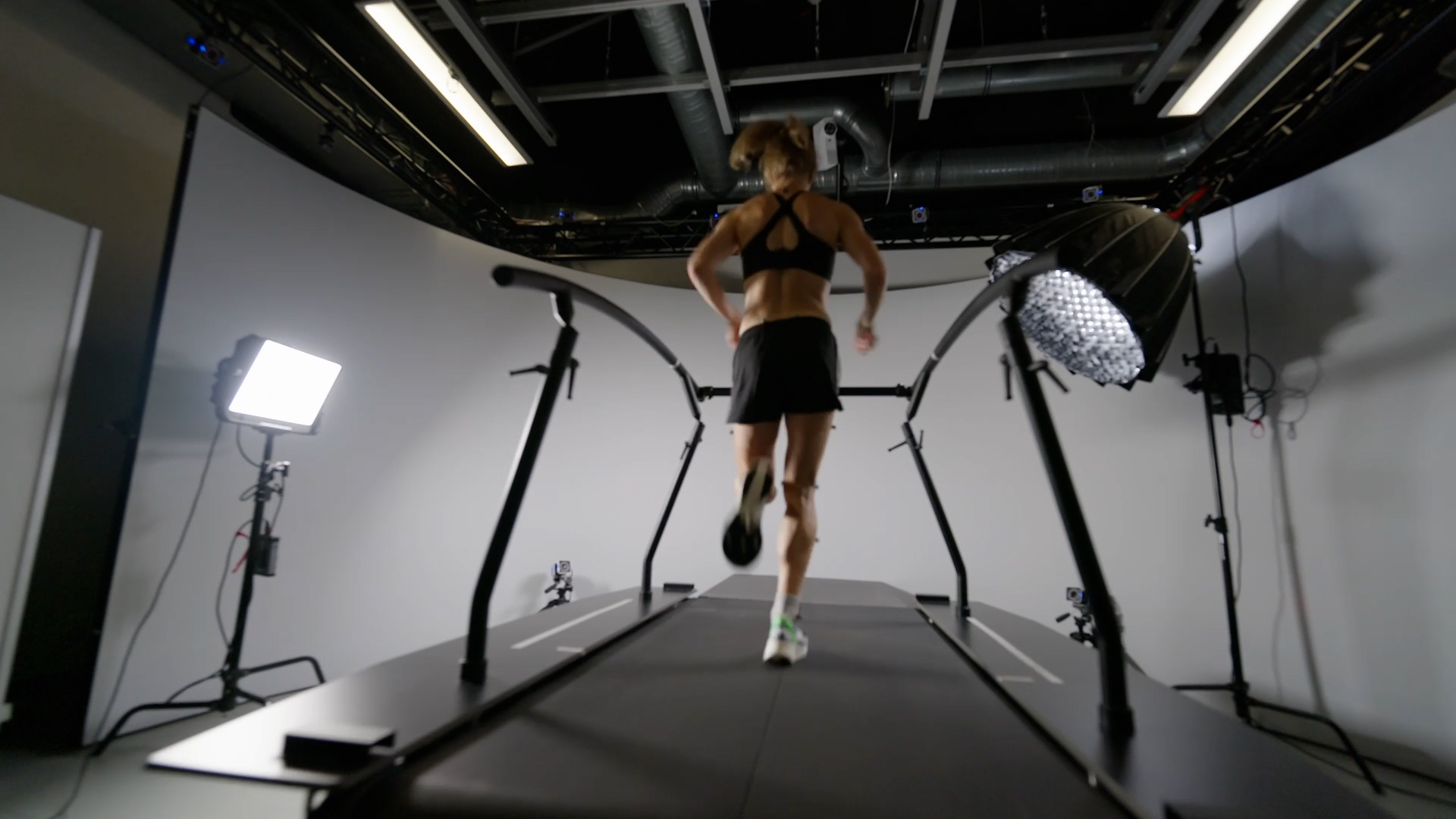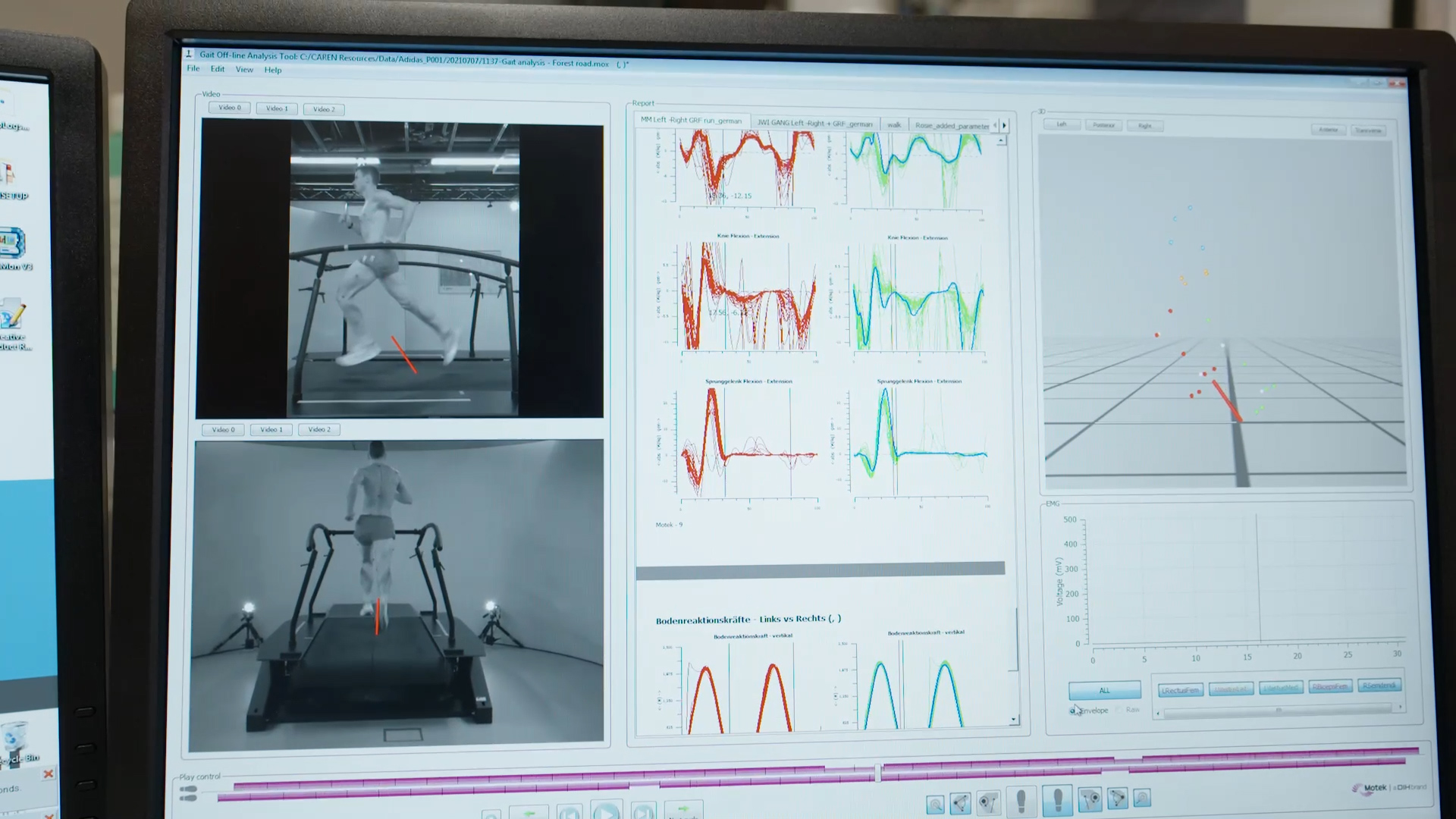adidas Runners coaches Lucas Kempe and Mari Dottschadis tested the new adizero collection in a biomechanical lab. Find out how the new adizero models work and how both runners would recommend using them in training.
“I didn’t think that it was possible”, adidas Runners coach Lucas Kempe says. “The adizero Adios Pro already felt different compared to the older adizero models. And now the Adios Pro 2 is even lighter. I really didn’t think that could be done.”
Mari Dottschadis and Lucas Kempe were invited to do a case study with the new adizero line. In the biomechanical running laboratory BeMoved they compared the three new adizero models; the Adios Pro 2, the Boston 10 and the Prime X, to the adizero Boston 9.
BeMoved - Berlin Movement Diagnostics work with a wide variety of athletes ranging from ambitious beginners to professional athletes. Biomechanical expert Dr. Srdan Popovic explains: “We pursue different goals with the running analyses we conduct here. On one hand we are looking to prevent injuries by figuring out areas of weakness and teaching runners how to correct them. On the other hand, we want to improve performance by searching for the most economic and efficient way for each person to run.”
"I Feel Faster and More Relaxed"
I don’t even need to see the results, my body already tells me the difference. I feel faster and more relaxed running at that pace.
- Mari Dottschadis, adidas Runners coach
Mari and Lucas tested each shoe at 16km per hour (3:45min per km) pace on the treadmill for a couple of minutes. By analyzing multiple reflective markers placed on their ankles, knees, hips and other running related points, Popovic was able to analyze the difference in their running motion.

“The biomechanical analysis showed changes in the biomechanics of Mari’s ankle joint that explain Mari’s feeling”, explained Dr. Popovic. In the new adizero line Mari’s ankle joint shows less movement than in the adizero Boston 9. “It’s logical to assume, that the muscles in her calves probably have to work more in the older model. Mari’s results thereby confirm what current scientific research indicates” said Dr. Popovic: “We know from studies that during a longer run the plantar flexors – part of the calf muscle – fatigue first. So, if there would be a smart running shoe on the market, it would be designed to protect the calf muscles from fatiguing too early.”
The new adizero models benefit from two technological features working together. The LIGHTSTRIKE PRO midsole foam is very light and responsive, combined with the stiffness of the carbon-infused ENERGYRODS the features work to limit energy loss.
Pay attention to your foot strike
After running in adizero Adios Pro 2 Lucas says: “It’s just so much fun to run in them, honestly”. He recounts racing The Speed Project in 2019 in an older adizero model, running over 100km in the 32-hour team relay: “I wonder how fast we could have run that race in the Adios Pro 2.”

Despite giving similar feedback to Mari, Lucas also subconsciously changed his foot strike. While Mari kept her mid-foot strike throughout testing all shoe models, Lucas changed without noticing from a heel strike to a forefoot strike in the new adizero line. According to Dr. Popovic this change in stride mechanics is something that might happen when runners switch to different shoes because their body interacts and communicates differently with each model. “While this change in foot strike gives Lucas better biomechanics in his knee joint, runners should be careful with a sudden transition in running style as this can lead to injuries.” Popovic also cautioned runners against increasing their training mileage and intensity too quickly. Runners should build up gradually and take time to get used to the new adizero models
Play with the shoe. The shoe is communication with your body all the time. Listen to it. Just build up gradually and then you will find your sweet spot.
- Dr. Srdan Popovic, Berlin Movement Diagnotics Biomechanical Expert
Dr. Srdan Popovic advised runners to take their time to get used to new models. “Increase your training mileage with the shoes gradually, especially the length of your long run and pay attention to what your body tells you. In speed training, introduce the shoes first in shorter intervals or in tempo training with pace changes.” According to the biomechanical expert, fartleks – alternating minutes of fast running with minutes of easy running - are also a great way to get used to the new adizero range.
“The adizero Boston 9 was my all-time favorite training shoe”, says Mari. When she first took the adizero Boston 10 out of the box, she was surprised: “It’s a completely different shoe than the former Boston. But it’s a great addition to the adizero collection. For me, it just works”. The adizero Boston 10 allows her to benefit from the interplay of the LIGHTSTRIKE PRO foam with glass-fiber ENERGYRODS in training and save the Adios Pro 2 for race day and race specific workouts.
Lucas said the biggest surprise of the adizero collection was the adizero Prime X – which features a thicker midsole than the adios Pro 2 in combination with carbon-infused ENERGYRODS. “I was skeptical at first because walking in it feels a little weird but as soon as I got into running, it felt great.”
Both runners were surprised by the new adizero Adios Pro 2. Mari stated: “It would definitely be my top pick for any road race from 5k up to the Marathon.”
